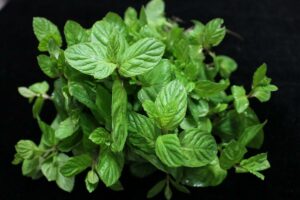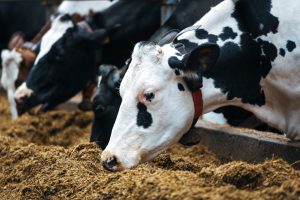Mohsen Sahraei Belverdy and Fernando Diaz
Expansion in biodiesel production worldwide has increased glycerol stocks, making this high energy co-product a potential supplement for dairy cows. According to the US Food and Drug Administration, pure glycerol is known as a safe animal feed. Glycerol could improve blood glucose status in cows because it is absorbed through the rumen wall and utilized for glucose synthesis in the liver. Furthermore, it is fermented to propionate in the rumen, a gluconeogenic substrate that increases blood glucose level after absorption.
A recent short-term study performed at the Department of Agricultural Research for Northern Sweden, the Swedish University of Agricultural Sciences, Umeå, evaluated the effect of replacing wheat starch with refined glycerol on feed intake and milk production of mid-lactation cows. Crude glycerol is purified to 99% or a higher purity by eliminating impurities such as catalysts, salts, and methanol, which can be toxic for cows.
Using twenty-two Swedish Red lactating cows with an average of 121 days in milk, the researchers (Karlsson et al., 2019) compared two grass silage-based diets (60% in a dry matter; DM) containing either 20% DM food-grade wheat starch or 20% DM refined glycerol (99.5% grade glycerin). In order to reduce the freezing point, glycerol was mixed with 33% drinking water and pumped into the TMR mixer. In addition, both diets contained crimpled barley (7.0% DM), rapeseed meal (12.0% DM), and a mineral mix (0.5% DM). Since energy content is slightly greater (9.5%) in wheat starch than in glycerol (1.96 vs. 1.79 Mcal of NEL/kg of DM), the starch diet was more energetic. Protein and fiber concentration were similar in both diets.
Cows were housed in a free-stall barn and milked twice a day. Two-week before starting the study, all cows were fed a diet with glycerol and wheat starch at 10% DM to adapt the rumen microbes to both feeds. The authors reported the following findings:
- Dry matter intake was higher (1.5 kg/day) in cows fed the glycerol diet compared with cows that received the starch diet (21.6 vs. 20.1 kg/day). Its sweet taste may be the reason for the greater intake observed in the glycerol diet.
- Although feeding glycerol reduced milk yield (24.6 vs. 28.1 kg/day), energy-corrected milk yield (ECM; 29.0 kg/day) was similar between diets.
- Compared with the starch diet, cows receiving the glycerol diet showed greater milk fat (5.10 vs. 4.17%) and milk protein content (3.82 vs. 3.58%).
- In addition, cows fed the glycerol diet were less efficient. Energy and protein efficiency were 9.5 and 13.7% lower in the glycerol diet.
- Interestingly, body weight and body condition score changes were not affected by diets.
In conclusion, this study shows that replacing wheat starch with glycerol at a level of 20% of dietary DM reduced energy and protein efficiency. Cows consumed a high level of glycerol (4 kg/day). Lower inclusion level of glycerol may keep milk production without affecting feed efficiency. More research is warranted with lower inclusion levels.
Reference
Karlsson, J., Ramin, M., Kass, M., Lindberg, M. and Holtenius, K. 2019. Effects of replacing wheat starch with glycerol on methane emissions, milk production, and feed efficiency in dairy cows fed grass silage-based diets. J. Dairy Sci. 102: 7927-7935.
© 2019 Dairy Knowledge Center, LLC. All Rights Reserved.









